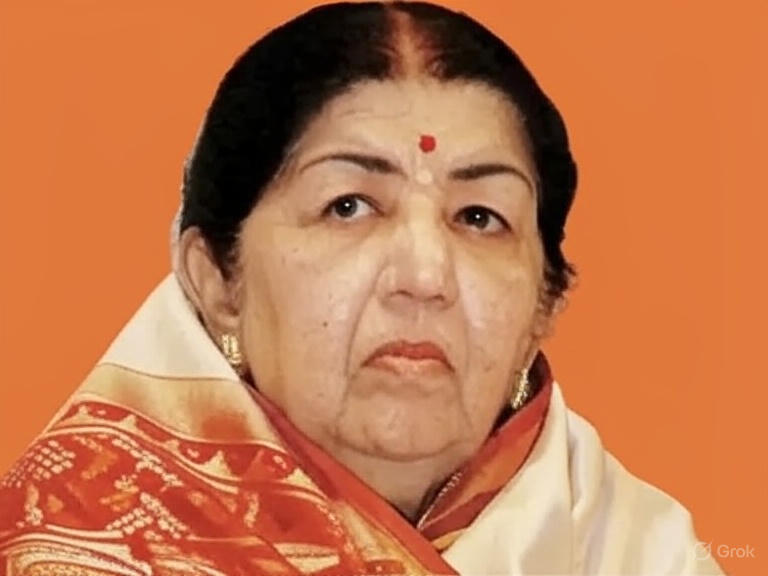Asia’s Largest Hospital in Pune to Honor Lata Mangeshkar
Introduction
In a heartfelt tribute to one of India’s most iconic voices, plans for Asia’s largest hospital have been announced in Pune, Maharashtra, in honor of the late legendary singer Lata Mangeshkar. Unveiled on what would have been her 96th birthday, this ambitious project highlights the Mangeshkar family’s dedication to healthcare and cultural preservation.
Combining state-of-the-art medical facilities with a lasting tribute to the “Nightingale of India,” this hospital is poised to redefine healthcare infrastructure in Pune and beyond.
🚨 Asia's largest hospital to be built in Pune in the name of Lata Mangeshkar
— Indian Tech & Infra (@IndianTechGuide) October 2, 2025
- Maharashtra government. pic.twitter.com/lXly5VJBue
The Announcement and Occasion
Veteran music composer Hridaynath Mangeshkar, Lata’s younger brother, shared the news during a special musical tribute titled “Mee Lata Dinanath” on September 28, 2025. The event celebrated Lata Mangeshkar’s legacy through her beloved Marathi and Hindi songs.
Hridaynath revealed that construction will commence in 2026 on a 40-acre plot, emphasizing the hospital’s scale and modern amenities. He stated:
“Lata Didi planted saplings to commemorate Baba's work. Now it has been expanded considerably. Next year, Asia's largest hospital will be built in the name of Didi on an area of forty acres. All kinds of modern services and facilities will be provided in this hospital.”
The statement reflects the family’s vision of blending healthcare innovation with cultural homage.
Project Details
The hospital will cover 40 acres in Pune, positioning it as the largest in Asia upon completion. Key highlights include:
- Comprehensive medical services spanning multiple specialties.
- Modern infrastructure and technology, expected to set new benchmarks in healthcare.
- Potential to attract medical tourism, enhancing Pune’s reputation as a healthcare hub.
Though initial reports mistakenly suggested government involvement, it is confirmed as a Mangeshkar family initiative, continuing their long-standing tradition of healthcare philanthropy through the existing Deenanath Mangeshkar Hospital.
Background on Lata Mangeshkar and Family Legacy
Lata Mangeshkar, often called the “Nightingale of India,” had a career spanning over seven decades, recording thousands of songs across multiple languages. Recipient of India’s highest civilian honor, the Bharat Ratna, she passed away in February 2022, leaving an indelible mark on Indian music and culture.
The Mangeshkar family has a history of philanthropic contributions, particularly in healthcare. The Deenanath Mangeshkar Hospital, named after Lata’s father, has expanded into a major multi-specialty facility in Pune. Hridaynath emphasized the family’s consistent support during crises, including the COVID-19 pandemic.
Public Reaction and Social Media Buzz
The announcement quickly gained traction online:
- Social media engagement: The X post by @IndianTechGuide featuring the hospital banner received over 10,000 likes, sparking discussions on the project’s significance.
- Public sentiment: Many applauded honoring an artist over political figures, while others debated potential alternative locations or names.
- Cultural impact: Supporters highlighted the symbolic link between Lata’s music and the hospital’s mission to “heal hearts.”
Prominent attendees at the birthday event included Maharashtra Cultural Minister Ashish Shelar, MP Medha Kulkarni, and veteran singer Usha Mangeshkar, emphasizing the cultural and philanthropic resonance of the project.
FAQs
Q1: Where will Asia’s largest hospital be located?
A1: The hospital will be built on a 40-acre site in Pune, Maharashtra.
Q2: When will construction begin?
A2: Construction is scheduled to start in 2026.
Q3: Why is the hospital named after Lata Mangeshkar?
A3: The Mangeshkar family chose to honor Lata’s legacy, blending her cultural contribution with healthcare philanthropy.
Q4: Will the hospital be government-funded?
A4: No, this is a private initiative by the Mangeshkar family, continuing their healthcare legacy.
Q5: What specialties will the hospital offer?
A5: While specific departments haven’t been disclosed, it will provide comprehensive modern medical services.
Looking Ahead
This project represents a unique intersection of culture, legacy, and healthcare innovation. By establishing Asia’s largest hospital in Pune, the Mangeshkar family is not only immortalizing Lata’s contributions but also elevating India’s medical infrastructure.
The initiative is expected to:
- Serve as a benchmark for future hospitals in Asia.
- Strengthen Pune’s position as a hub for medical tourism.
- Reflect a model of celebrity-driven philanthropy, merging cultural legacy with public service.
In conclusion, this hospital embodies more than just bricks and technology—it’s a statement about the power of legacy, compassion, and social responsibility. As India continues to advance in healthcare, initiatives like these remind us that honoring cultural icons can go hand in hand with tangible contributions to society.


0 comments